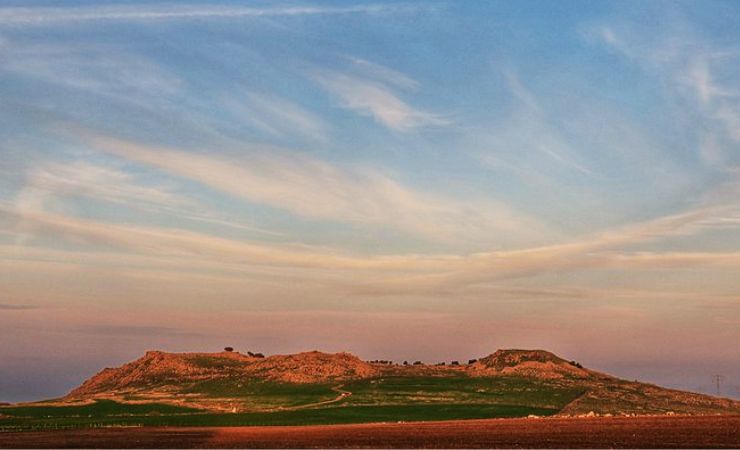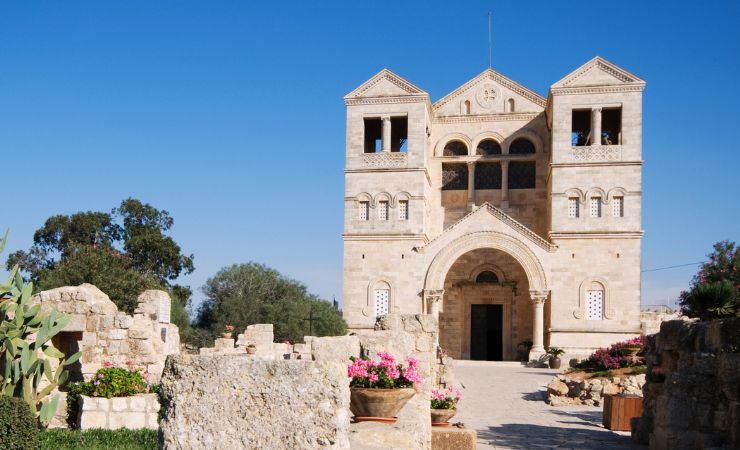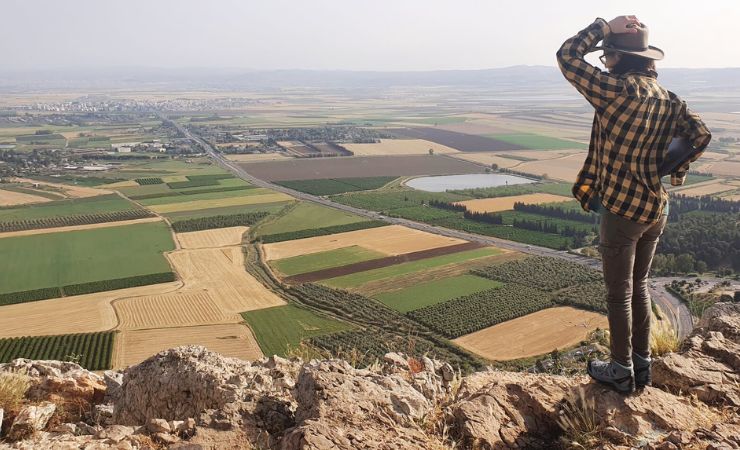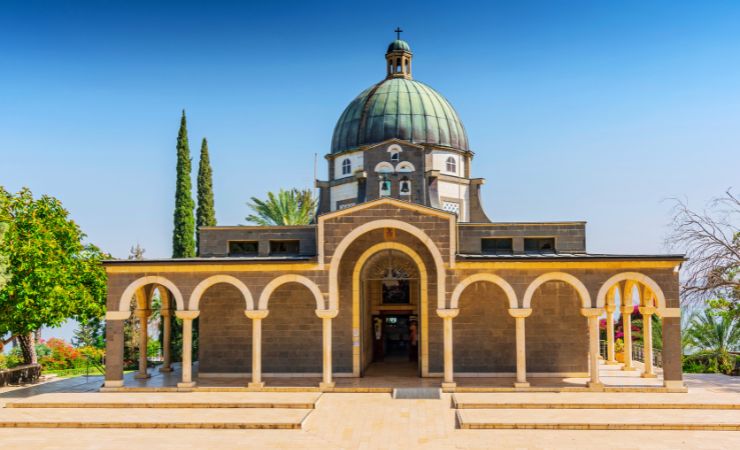Horns of Hattin: A Battle that Changed the Middle East
The Horns of Hattin, an extinct volcano with twin peaks, is where the Battle of Hattin was fought between the Crusaders and the Muslim Sultan Saladin in July of 1187. This was the main turning point of the history of the Crusades in the Holyland.

Location and Geology
The Horns of Hattin is an extinct volcano, located in the Lower Galilee region of Israel. Its twin peaks that were formed from volcanic activity, have been eroded over time, giving them their distinctive shape. Today, the Horns of Hattin is a National Park in Israel.



Biblical Context of the Horns of Hattin
In the 1800s, many pilgrims identified the Horns of Hattin as the location where Jesus delivered his Sermon on the Mount. Although the Mount of Beatitudes where the Church of Beatitudes) is the acceptable location today, a significant number of Protestants continue to regard the Horn of Hattin as the actual site of this iconic sermon, rather than the Mount of Beatitudes by the Sea of Galilee. In 2023 a pyramidical structure made by the “Church of God” was erected to identify the place where Jesus preached to his Disciples.
Lessons Learned from the Battle of Hattin
The Crusaders made several key mistakes leading up to and during the Battle of Hattin, which contributed to their defeat. Here are the primary ones:
Breaking the Truce: One of the initial mistakes was the aggressive actions of Reynald of Châtillon, who repeatedly violated truces with the Muslims. His raids on Muslim caravans and an audacious plan to attack Mecca itself provoked Saladin and provided him with a casus belli, or just cause for war.
- Poor Strategic Decision: King Guy of Jerusalem, under pressure from the more militant factions within the Crusader states, decided to march his army to relieve the besieged city of Tiberias. This decision was made despite advice from more experienced military leaders like Raymond III of Tripoli, who suggested a more defensive strategy.
- Lack of Water and Supplies: The Crusader army faced a grueling march across arid terrain in the scorching heat of July without securing adequate water sources. Saladin’s forces strategically controlled the water sources, leaving the Crusaders parched and demoralized.
- Terrain Disadvantage: The Crusaders allowed themselves to be drawn into a battle on the Horns of Hattin, a location surrounded by rocky hills, which was unfavorable for their heavy cavalry and infantry formations. This terrain gave Saladin’s more mobile forces a distinct advantage.
- Failure to Protect the Rear: As the Crusader army marched, they failed to adequately protect their rear and flanks. This allowed Saladin’s forces to harass and weaken them continuously during their march, further sapping their strength before the main battle.
- Underestimating the Enemy: The Crusaders may have underestimated Saladin’s ability to unite various Muslim factions and his tactical prowess on the battlefield. Saladin’s strategy of continuous harassment, controlling water sources, and choosing the right terrain showcased his superior understanding of desert warfare.
- Internal Divisions: The Crusader states were not a monolithic entity but a collection of principalities and territories with their own interests and rivalries. These internal divisions often led to conflicting strategies and priorities, weakening their collective military response.
- Over-reliance on Heavy Cavalry: While the heavily armored knights of the Crusader states were a formidable force, their effectiveness was reduced in the conditions of Hattin. The combination of heat, lack of water, and the terrain made it difficult for them to execute their traditional charge effectively.
Sources and Additional Reading:
World History Encyclopedia – Battle of Hattin
Battle of Hattin – Wikipedia
Warfare History Network – The Horns of Hattin
Nearby Sites
Magdala: Magdala is believed to be the hometown of Mary Magdalene. Recent excavations have unearthed a first-century synagogue.
National Park Arbel: A nature reserve known for its cliffs and panoramic views of the Sea of Galilee. Includes the ancient Synagogue in Arbel from the Byzantine period.
Ancient Synagogue in Tiberias: This ancient synagogue is a few synagogues built one on top of the other.
- Jesus Boat: The Jesus Boat, also known as the Ancient Galilee Boat, is an ancient fishing boat from the 1st century AD.
Nebi Shuyab: Also known as the Tomb of Jethro, it’s a Druze holy site dedicated to Jethro, the father-in-law of Moses.



